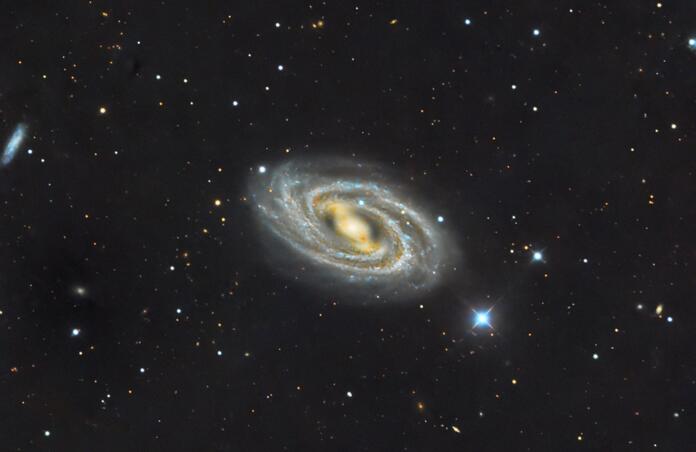Telescope Focal Ratio Explained

One of the major characteristics we look for when buying a telescope to use for imaging is what the F-ratio of the telescope is. The best and most comprehensive treatment of this topic is from the Sky Watcher Webcast, “Understanding F Ratio” (that I encourage anyone struggling with this topic to watch. What follows is a brief summary of that talk.
The F-ratio is the ratio of the telescope’s focal length to its aperture:
F ratio = Telescope Focal Length (mm) / Telescope Aperture (mm)
F ratio is usually indicated with a designation and number such as f/3.9. Simply put, this is an indication of the light gathering ability and the speed of the telescope. The smaller the F-ratio, the more light gathering ability the telescope has or the faster the optic is and the brighter the target image will be for a specific exposure time. The larger the F-ratio, the less light gathering ability it has or the slower the optic is and the dimmer the target image will be for the same specific exposure time.
So, what does this mean for us astro photographers? Faster F-ratio telescopes will allow you to collect more light in less time. The consequences of this is that you will be able to get a lot of data by taking shorter sub exposures with a faster F-ratio. Since you don’t need to take longer sub exposures, the imaging run will be less demanding on your mount and your auto guiding system.
To illustrate this, I have 2 telescopes I regularly image with using the same camera; one telescope is an Orion 8 inch (203 mm) newtonian astro graph that has a focal ratio of f/3.9. The other telescope is an Astro Tech AT125 EDL (125 mm aperture) that has a focal ratio of f/6.95. The Orion 8 inch newtonian astro graph is 3.2 times faster than the refractor. So, the data I can get using 60 second exposures on the Orion telescope will require 192 seconds on the Astro Tech refractor to collect the same data. In this case, I can get 3 exposures on the Orion (60 per hour of imaging) for every single exposure on the Astro Tech refractor (~19 per hour of imaging).
Now, some things to keep in mind;
- Faster optics may not always be better; focusing could be more difficult. With faster optics, the light cone is steeper and the window to achieve focus is a lot smaller than a higher F-ratio optic. Your focuser must be very precise.
- Collimation is quite critical for reflective optics such as my Orion 8 inch newtonian.
- If you use filters for imaging, especially narrowband filters, you may need to use specialized filters because the filter wavelengths can shift with the steep light cones of faster optics.
The last item I’ll mention is that you are able to change the focal length of your telescope through the use of focal extenders or focal reducers to adjust / improve the characteristics of your telescope which in turn will affect the F-ratio.
Clear skies...
Astro Image Credits:
M109 (https://app.telescope.live/click-grab/all?target=m109 ); Telescope Live 1-Click Observation Data, Processed using PixInsight by Reggie Jones
